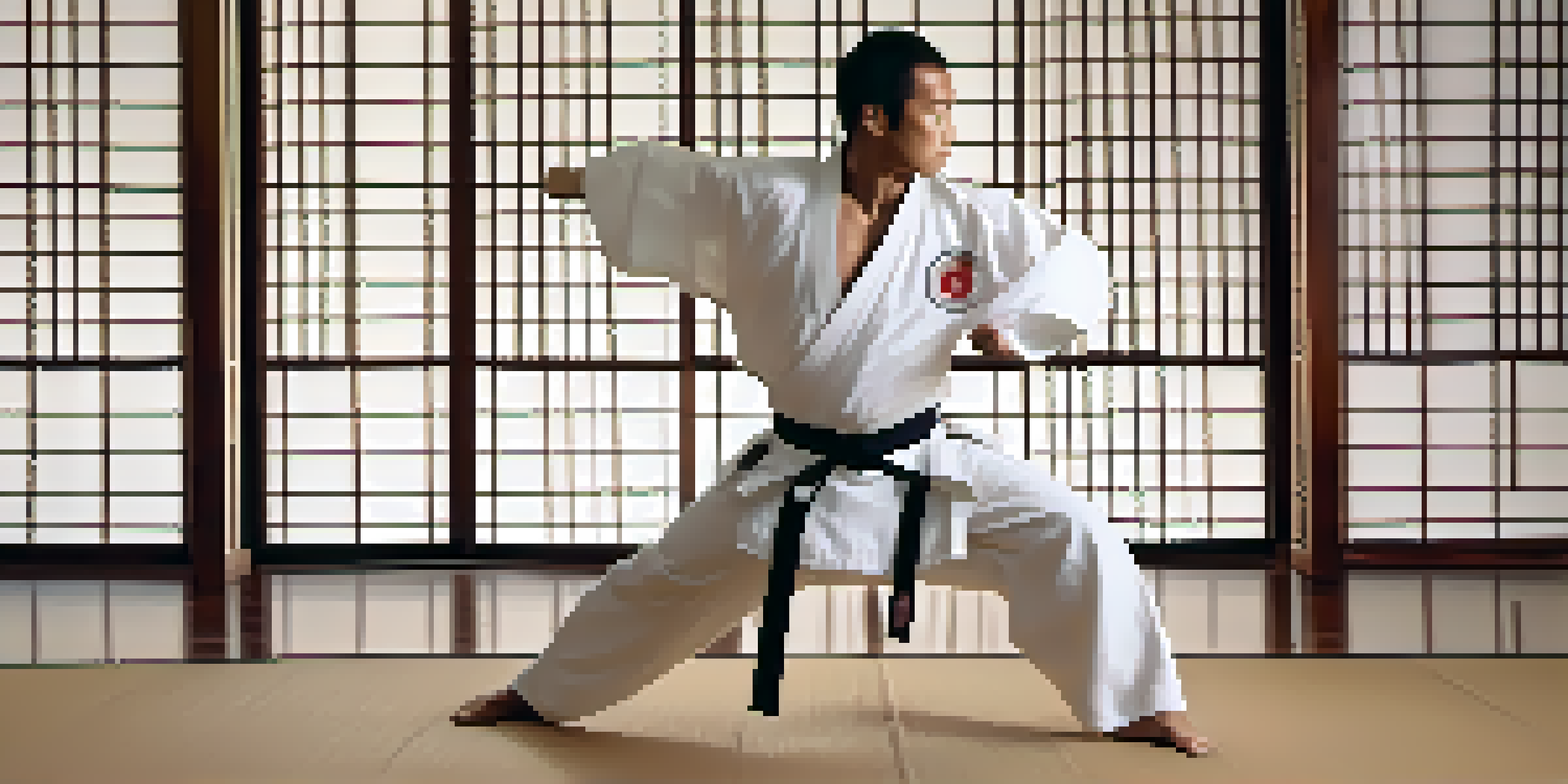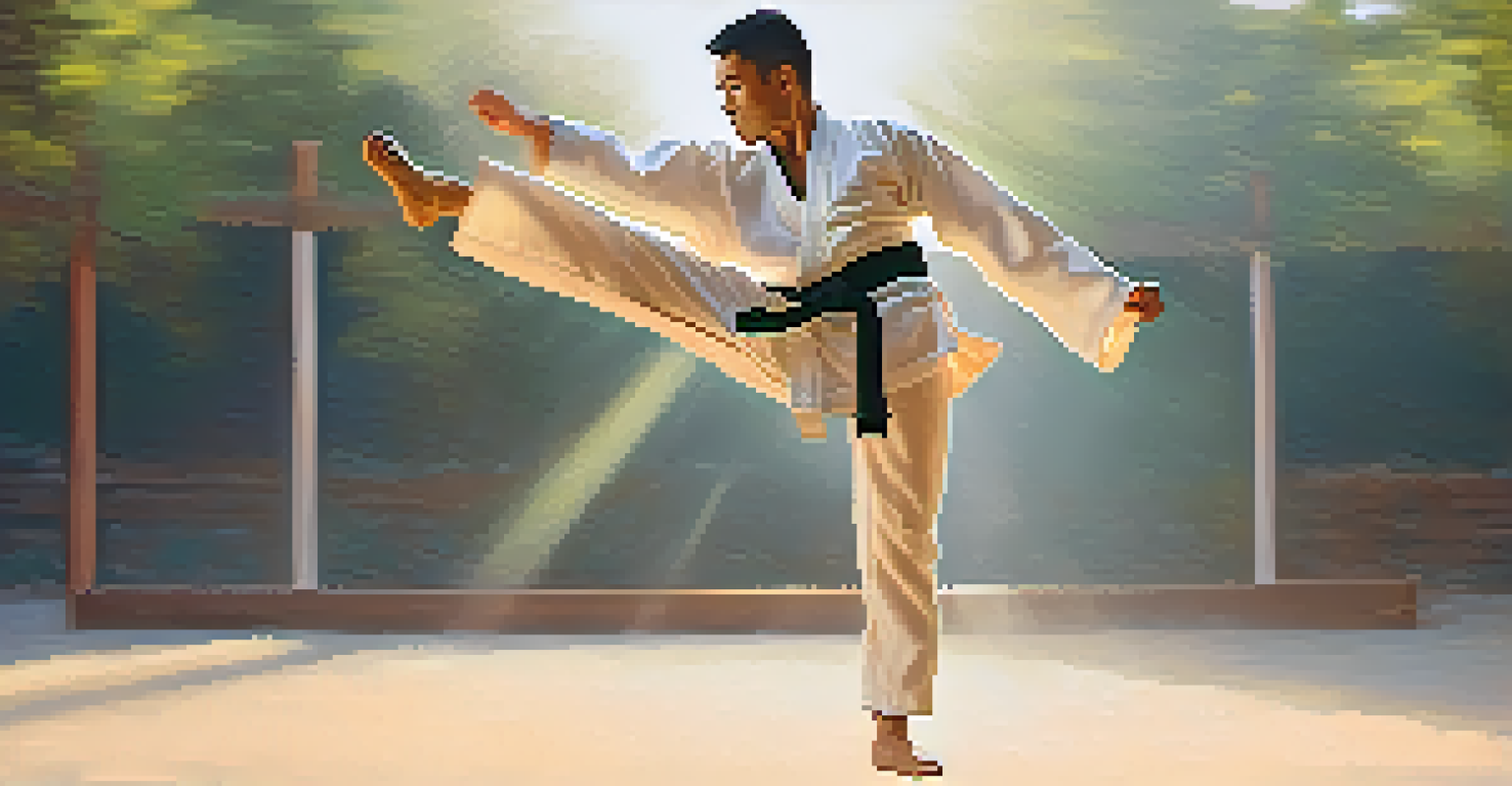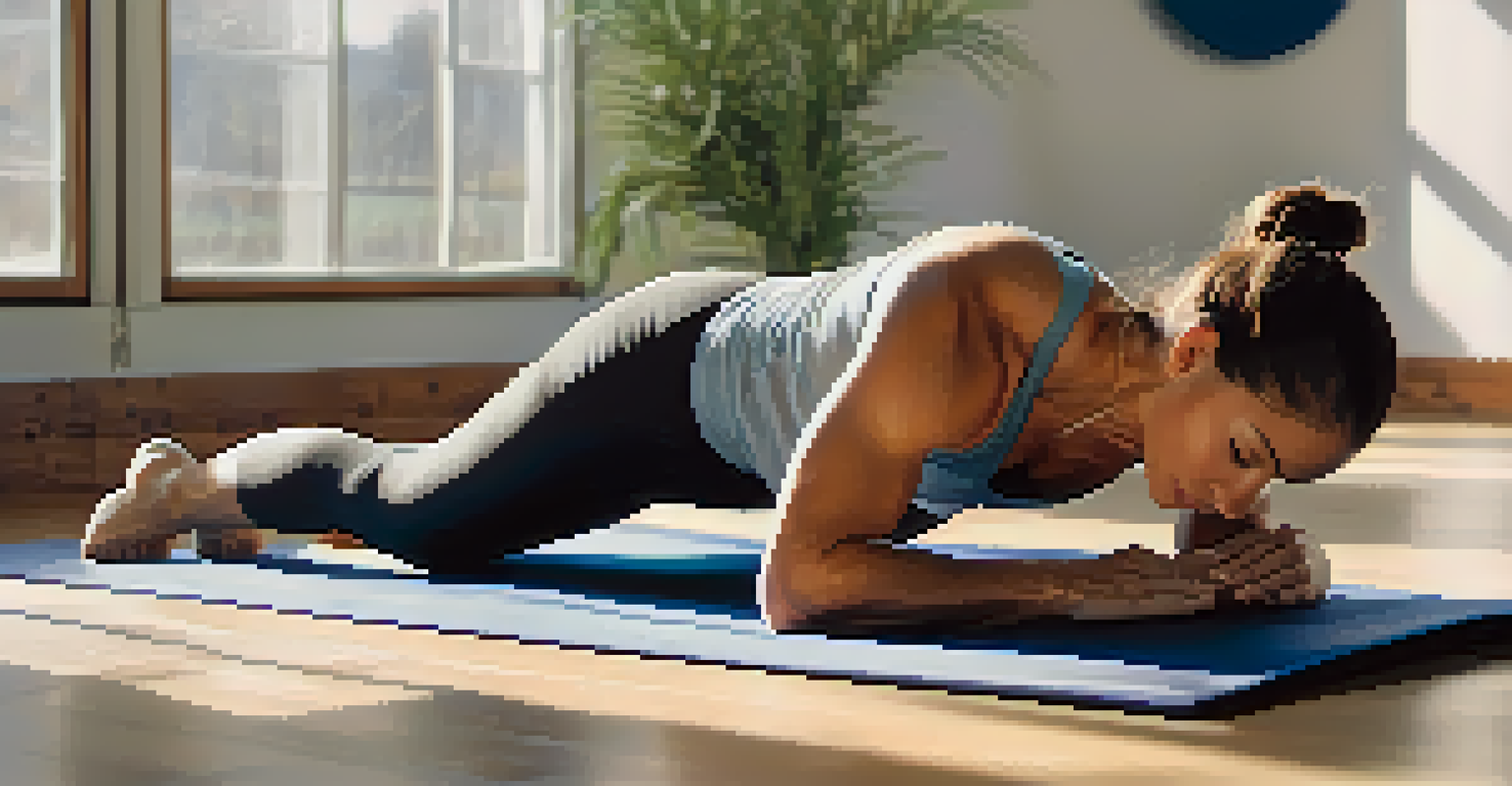Improving Balance and Agility Through Martial Arts Practice

Understanding Balance and Agility in Martial Arts
Balance and agility are essential components in martial arts, influencing performance and safety. Balance refers to the ability to maintain your center of gravity, while agility is the capacity to move quickly and change direction effectively. Practicing martial arts can enhance both skills, allowing practitioners to execute movements with precision and control.
The more you sweat in training, the less you bleed in battle.
In martial arts, balance is tested during various stances, from high kicks to defensive postures. The need to adjust your position while engaging with an opponent is crucial. Agility comes into play as you dodge strikes or reposition yourself, making quick adjustments to maintain an advantage in combat.
By focusing on these elements, martial artists not only improve their fighting skills but also develop a strong foundation for everyday activities. Whether it’s walking on uneven terrain or participating in sports, enhanced balance and agility can lead to greater overall physical fitness.
The Role of Stances in Building Balance
Stances are foundational in martial arts, serving as the building blocks for balance. Whether it’s a front stance in karate or a horse stance in kung fu, each position requires practitioners to engage their core and maintain stability. This focus on stance strengthens the muscles that contribute to balance over time.

As students practice these stances, they learn to distribute their weight and find their center of gravity. The process often involves trial and error, which can be likened to learning how to ride a bicycle. Initially, you might wobble a lot, but with practice, you find your balance and confidence.
Balance is Key to Martial Arts
Achieving a strong sense of balance is essential for executing movements with precision and maintaining an advantage in combat.
This practice is not just about being still; it translates into dynamic movements. As martial artists switch between stances, they train their bodies to remain stable even when in motion, enhancing their overall balance.
Dynamic Movements That Enhance Agility
Agility in martial arts is largely developed through dynamic movements, such as footwork drills and sparring. These activities require quick reactions and the ability to pivot or shift directions seamlessly. For example, in taekwondo, practitioners often practice rapid kicks while simultaneously moving, which sharpens their agility.
It's not the size of the dog in the fight, it's the size of the fight in the dog.
Consider agility training as a dance; it’s all about rhythm and flow. Just like a dancer must be able to move elegantly from one position to another, martial artists must be able to execute techniques fluidly. This practice helps to develop muscle memory and coordination, essential for quick, agile responses.
Moreover, agility training can be both fun and challenging. Incorporating games or competitive elements into training can keep motivation high while improving these essential skills. It’s a win-win situation!
The Importance of Core Strength
Core strength plays a pivotal role in both balance and agility. A strong core stabilizes the body, allowing for better control during complex movements. In martial arts, the core is engaged whether you’re throwing punches, executing kicks, or maintaining a stance.
Many martial arts exercises inherently focus on core conditioning. For instance, traditional movements often require tensing the abdominal muscles, which not only strengthens them but also improves overall stability. Think of your core as the trunk of a tree; if it’s strong, the tree can withstand winds and remain upright.
Agility Enhances Performance
Dynamic movements and quick reactions are crucial for developing agility, allowing martial artists to pivot and adjust effectively during training and sparring.
By prioritizing core strength in training, practitioners enhance their ability to maintain balance in various positions and transitions. This foundational strength ultimately translates to improved performance both in martial arts and in daily activities.
Flexibility: A Key Component of Balance and Agility
Flexibility is another critical aspect that supports balance and agility in martial arts. A flexible body can move through a wider range of motion, which is vital when executing techniques or dodging attacks. Stretching routines are often integrated into martial arts training to enhance this flexibility.
Imagine a rubber band; the more you stretch it, the more versatile it becomes. Similarly, flexible muscles and joints allow martial artists to perform complex movements more easily. This increased range of motion can lead to better balance as practitioners can adjust their positions more fluidly.
Incorporating flexibility training, such as yoga or dedicated stretching sessions, can significantly benefit martial artists. Improved flexibility not only aids in martial arts but also helps in injury prevention and overall physical health.
Mindfulness and Focus in Martial Arts Training
Martial arts is as much about mental discipline as it is about physical prowess. Practicing mindfulness helps martial artists develop focus, which is essential for maintaining balance and agility. When your mind is clear, you can react more effectively to changing circumstances, whether in training or competition.
Think of mindfulness like tuning a musical instrument; it allows you to perform at your best. By concentrating on your body movements and breathing, you cultivate an awareness that enhances your ability to stay balanced and agile. This mental clarity translates directly into better performance.
Core Strength Supports Stability
A strong core is vital for maintaining balance and agility, as it stabilizes the body during complex movements in martial arts.
Furthermore, incorporating meditation or breathing exercises into training can deepen this focus. As martial artists learn to center their thoughts, they also improve their physical execution, creating a harmonious relationship between mind and body.
Setting Goals for Continuous Improvement
Setting goals is a crucial part of any martial arts journey, especially when it comes to improving balance and agility. Whether it’s mastering a new technique or increasing flexibility, having clear objectives keeps practitioners motivated. This process of goal-setting can lead to significant progress over time.
Consider breaking down larger goals into smaller, more manageable steps. For example, if your aim is to improve your side kick, you might start by focusing on balance and core exercises before moving on to the kick itself. This structured approach allows for measurable improvement and builds confidence.

Regularly reviewing and adjusting your goals ensures that you stay on track. Celebrate your achievements, no matter how small, as they contribute to your overall growth in martial arts, fostering a sense of accomplishment and further motivating your practice.